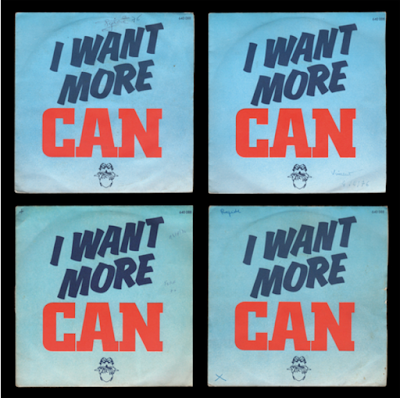Pipilotti Rist
I’m not the Girl Who Misses Much
Stuttgart, Germany: Oktagon Verlag, 1998
27.7 x 21.7 x 4.2 cm.
Edition of 300 signed and numbered copies
Pipilotti Rist's I’m not the Girl Who Misses Much - produced when she was still a student at the School of Design in Basel, Switzerland - remains one the artist's best known works, perhaps only bested by Ever Is Over All.1
The seven and a half minute single-channel video depicts the artist in a low cut black dress, dancing frenetically in an empty white room, singing the title phrase over and over again, like a meaningless mantra.
The repeated line is a slight variation from the opening lyric of the Beatles' song Happiness Is A Warm Gun2, from the eponymously titled double "White Album". The song was written by John Lennon, partly about Yoko Ono (and inspired by a headline in a National Rifle magazine)3.
"In my village in Switzerland," Rist recalled to Hans Ulrich Obrist, "I had a small window into the art world through the mass media; through John Lennon and Yoko Ono I moved from pop music to contemporary art. In return, I will always be grateful to popular culture". Ono's video and sculptural work was an early influence on the artist, alongside Laurie Anderson and Nam June Paik.
Rist told The New Yorker in 2020 “Lennon sings, ‘She’s not a girl who misses much,’ and I used to walk on the street singing that like a mantra, like a self-fulfilling prophecy.”
In the video she repurposes the line into a first-person anthem, modulating her voice from that of a little girl, to that of a confident woman. This is further exaggerated in post-production, where the sped up and slowed down footage changes the line into both a high-pitched cartoonish squeal, and the low moan of a funeral dirge. The video is also manipulated, through vertical and horizontal freeze frames and the type of sumptuous saturated colour balance treatment that she would become known and celebrated for.
In the glitchy short work, Rist performs for the camera, her maniacal dancing causes her breasts to fall out of her dress, repeatedly, as if she simply cannot be contained.
The work was considered a feminist response to the sexist tropes populating MTV music videos at the time, but Rist said that she was not overly familiar with channel prior to making the work. She viewed it as more of a "personal exorcism".
Rist submitted the video to the Solothurn Film Festival, in Switzerland, where it was accepted, and well received. By the time it had appeared in a few German group shows, three New York City gallerists had approached her, all offering representation. She signed with Luhring Augustine, joining a roster that included Christopher Wool, Rachel Whiteread, and Albert Oehlen.4
This packaged version of the work was produced to coincide with exhibition of the same name at the Kunstmuseum St. Gallen, Neue Galerie am Landesmuseum Joanneum, Graz and at the Kunstverein in Hamburg.
In addition to I’m not the Girl Who Misses Much, the yellow VHS tape also includes You called me Jacky, Pickelporno and Pipilottis Fehler, as well as seven extracts from recordings for installations. It is accompanied by an envelope containing colour postcards, an artist book and a wooden-bead necklace. The work is housed in a cardboard box, sealed with a blue plastic ribbon. The work is signed and numbered in red felt pen on the box.
I’m not the Girl Who Misses Much is now valued at approximately $2000 US.
1. Rist's 1997 video installation Ever Is Over All inspired the car window smashing sequence in Beyoncé's music video for the song Hold Up. In Rist's video, she uses a flower to smash the windows of the parked cars. "I would have preferred that Beyoncé did it with a flower and not a baseball bat, because it changes the meaning. But, no, I was very flattered,” Rist later remarked.
2. The best interpretation of this song (possibly any) comes from the odious Albert Goldman, the hit-job biographer of Lennon, Elvis Presley and Bruce Lee. The Joycean gibberish from the first stanza:
The man in the crowd
with the multicoloured mirrors
On his hobnail boots
Lying with his eyes
while his hands are busy
Working overtime
A soap impression of his wife
which he ate
And donated
to the National Trust
is interpreted to be about a man using mirrors on his boots to look up the skirts of women in a crowd. He puts on a deceptively straight face while masturbating, and the soap impression of his wife is his ejaculate, which he releases into a toilet (The "National Trust"). The only worthwhile page out of seven hundred and twenty, in Goldman's The Lives of John Lennon book.
3. A May 1968 issue of American Rifleman, the magazine of the National Rifle Association (a copy belonging to producer George Martin) contained the title of the song as a headline. "I just thought it was a fantastic, insane thing to say. A warm gun means you just shot something," Lennon later noted.
4. Rist later signed with blue chip behemoth Hauser & Wirth, with both venues now representing her work.




















































